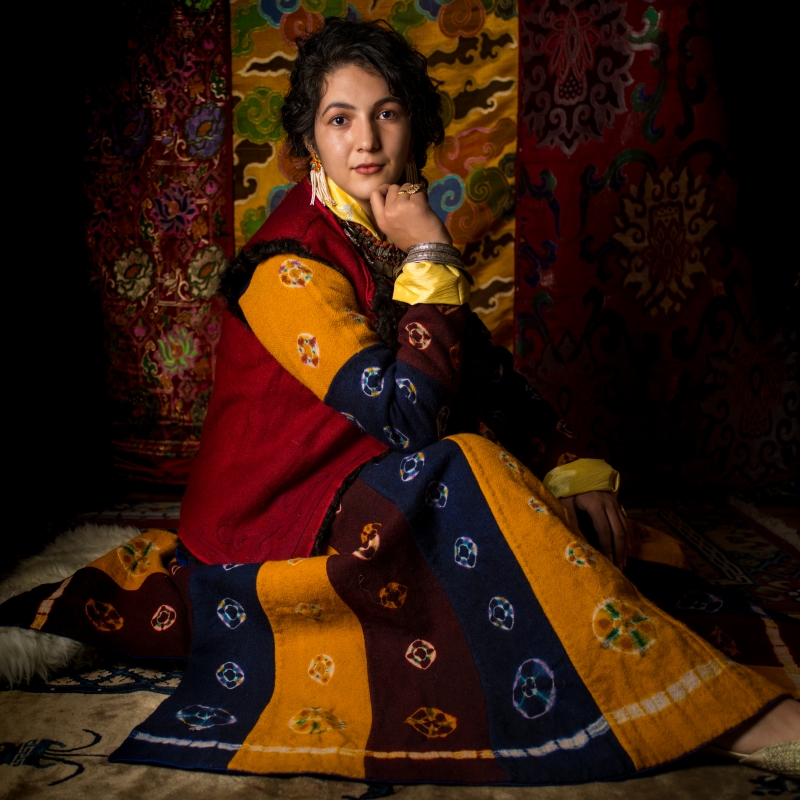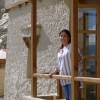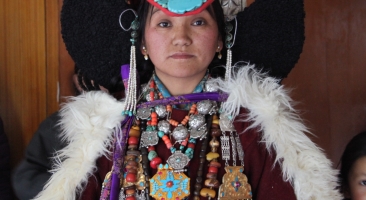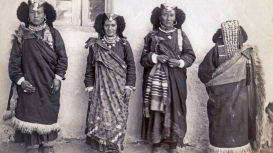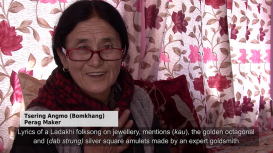Ladakh’s highly diverse textile tradition reflects its physical, socioeconomic and cultural environment. The range of fabrics used extends from simple homespun materials produced from locally available resources of wool and pashmina to elaborately patterned prestige garments made from trade textiles such as silk-brocades and velvet. Often worn along with necklaces of coral and turquoise, embellished gold and silver amulets, conch-shell bracelets and elaborate headdresses, they show the importance of jewellery in the repertoire of adornment in Ladakh.
The main fabric woven in the region is nambu. Made in a simple twill weave, it is used to make many of the clothes worn in Ladakh—long robes for men and women, capes, belts, hats and the uppers of boots. Design and colour vary across the region from the nomadic pastoralists who live in the northeast across to settled agriculturists in the central parts and the Brogpas who reside in the west. They also vary across communities between the Buddhist to Muslim populations of Ladakh, and to a lesser degree the Christians. The choice of jewellery worn in Ladakh is also often symbolic of the meaning attached to the material it is made from; these include a variety of stones such as coral, turquoise and amber.
In recent years, textile traditions and practices in Ladakh have changed and transformed. Education, accessibility to travel outside the region, growing military presence, tourism, media, Bollywood, changing fashion and social trends have all been factors responsible for this change. Bazaars in Kargil and Leh now offer the discerning buyer a wide variety of machine-made fibres and fabrics and ready-made garments. But the importance attached to dress in Ladakh and its relevance to identity in the region is apparent, which is further emphasised by the emergence of Ladakhi fashion designers and a visible resurgence of pride for local dress and fabric. This module puts together the past, present and the future of textile traditions of Ladakh.
